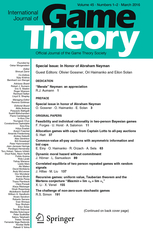Papers
Filter by type:

Social norms have long been recognized as an important factor in curtailing anti-social behavior and stricter pro-social norms are commonly associated with increased pro-social behavior. In this study, we provide evidence that very strict pro-social norms can have a perverse negative relationship with pro-social behavior. In laboratory experiments conducted in 10 countries across 5 continents, we measured the level of honest behavior and elicited injunctive norms of honesty. We find that individuals who hold very strict norms (i.e., those who perceive a small lie to be as socially unacceptable as a large lie) are more likely to lie to the maximal extent possible. This finding is consistent with a simple behavioral rationale. If the perceived norm does not differentiate between the severity of a lie, lying to the full extent is optimal for a norm violator since it maximizes the financial gain while the perceived costs of the norm violation is unchanged. We show that the relation between very strict pro-social norms and high levels of rule violations generalizes to civic norms related to common moral dilemmas such as tax evasion, cheating on government benefits, and fare dodging on public transportation. Those with very strict attitudes towards civic norms are more likely to lie to the maximal extent possible. A similar relation holds across countries. Countries with a larger fraction of people with very strict attitudes towards civic norms have a higher society-level prevalence of rule violations.
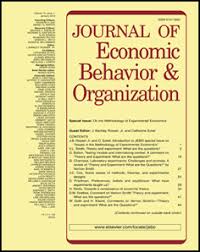
Intertemporal choice experiments are increasingly implemented to make inference about discounting and marginal utility, yet little is known about the predictive power of resulting measures. This project links standard experimental choices to a consumption smoothing decision with large stakes – around 10% of annual income. In a sample of around 400 Guatemalan Conditional Cash Transfer recipients, we find that preferences over large-stakes payment plans are significantly correlated with experimental measures of patience and diminishing marginal utility. These represent the first findings in the literature on the predictive content of such experimentally elicited measures for a large-stakes decision.
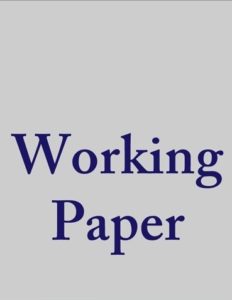
In all-pay auctions with affiliated types, the implications of being of a “higher” type can be complex. Having a high assessment of the value of the prize is good news, but only if the other participants in the contest are not too likely also to have high assessments. If anticipated competition is strong, it is not clear whether a high or low bid will be a best response. In a laboratory experiment, we study behavior in both private-values and common-values settings with two contestants. We find general support for the comparative statics of Bayes-Nash equilibrium for private values. In contrast, behavior in common values settings in which bidders have very noisy information about the value of the prize differs greatly from the equilibrium predictions.
We develop a principal-agent model where a police officer trades off investigating and patrolling in an environment where civilians choose between producing and stealing (and also whom to steal from). The equilibrium numbers of criminals and producers, punished or not, are summarized in a truth table of criminal justice. While scholars typically focus on only a few isolated elements, policing incentives affect all elements of the table. We show that when police incentives become more “high-powered” crime initially declines. However, stronger incentives increase crime, increase the clearance rate, and can either increase or decrease the ratio of false-positives to false-negatives.
The innocence problem, which occurs when an innocent person is falsely accused or convicted of a crime, is impossible to study with empirical data, because “true” innocence and guilt are unobservable in the “real world.” In this study, we replicate the criminal justice system in the laboratory with real salient crimes and subjects acting in the roles of defendants, prosecutors, and jurors in order to study the innocence problem. In a controlled environment, we identify individuals who are falsely or accurately accused of a crime and track them through the plea-bargaining system. This allows us to explore how being falsely accused of a crime affects plea bargaining decisions. We find evidence for a substantial innocence problem, reflected by a high willingness of truly innocent defendants to accept plea bargains. However, they do so at a lower rate than the truly guilty suggesting preferences for truth telling, an irrelevant factor in most economic theory. We also find evidence that individual preferences over uncertainty influence plea decisions, as predicted by economic theory. Overall, we find that loss aversion has a significant positive influence on plea decisions and that the reduced propensity of the truly innocent to accept plea bargains is driven by an interaction between their preferences to avoid lying and their preferences over uncertainty.

Conventional wisdom suggests that promising free information to an agent would crowd-out costly information acquisition. We theoretically demonstrate that this intuition only holds as a knife-edge case where priors are symmetric. For asymmetric priors, agents are predicted to increase their information acquisition when promised free information in the future. We test in the lab whether such crowding out occurs for both symmetric and asymmetric priors. We find theoretical support for the predictions: when priors are asymmetric, the promise of future “free” information induces subjects to acquire costly information which they would not be acquiring otherwise.

The criminal justice system imposes long-term spillover costs for the convicted and acquitted in the form of reduced employment opportunities and high rates of recidivism, possibly a byproduct of poor employment opportunities. This paper examines discriminatory behavior of investors and employers when they are given the opportunity to condition on their trustee’s/worker’s criminal record. Similar to the real world, our experiment shows that employers and investors do exhibit discriminatory behavior toward those with criminal conviction and those with criminal acquittals. However, no basis exists for the statistical discrimination, since reciprocator behavior is found to not depend on criminal record, while true innocence or guilt is found to play a large role in a subject’s reciprocity. While access to true innocence and guiltiness would prove invaluable to investors and employers, this is unobtainable in the real world. Furthermore, equating convictions with true guiltiness is worrisome, given truly innocent subject’s willingness to plead guilty.
We develop and experimentally test a model of voter information acquisition in nonpartisan elections, both with and without abstention. We theoretically demonstrate that allowing for abstention results in a (weakly) more informed electorate, unless information acquisition is cheap relative to the cost of voting. Our experimental data find, contrary to predictions, that voter informedness increases when voting is mandatory, even when the cost of information is high. Our data are well explained by Agent Quantal Response Equilibrium which accounts for the fact that uninformed voters are often observed to vote, even when it is not rational to do so.
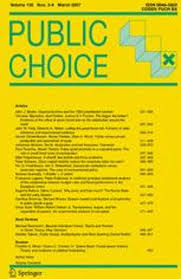
We experimentally examine perfectly discriminating contests under three valuation structures: pure common-value, pure private-value and a case with both private and common value components. In line with the results from the previous literature, we find that, regardless of valuation structure, contestants often choose very conservative expenditures, and very aggressive expenditures. Average expenditures exceed Nash equilibrium predictions. In valuation structures with a common value component, contestants often choose expenditures in excess of the expected value of the prize conditional on winning the contest. That is, they often guarantee themselves negative payoffs in expectation.
This paper demonstrates a novel approach to teaching the concept of deadweight loss using a double oral auction experiment conducted in the classroom. After the experiment students are given the associated data, and are tasked with calculating both predicted and observed consumer and producer surplus transaction by transaction. They are then asked to differentiate between deadweight loss resulting from an inefficient allocation of production and consumption given the observed number of transactions, as well as the deadweight loss resulting from an inefficient number of transactions. We find improved understanding of these concepts from the participating class.
We consider a three-party game of conflict with potential alliance formation, introducing the concept of a stag hunt alliance and using the concept as a novel solution to the alliance formation puzzle in contests. In a stag hunt alliance, allied inputs interact as (multiplicative) complements in the contest success function, reflecting the idea that allied efforts are coordinated and targeted against non-allies. Allowing for asymmetry among conflicting parties, we find conditions for stable alliance formation and show that, in some circumstances, the formation of an alliance can improve the expected payoffs of both the allied and unallied parties relative to unallied conflict. At the same time, the expected payoffs of allied parties also can be greater than their payoffs under a three-party exogenous settlement division without conflict. Hence, the ability to form stag hunt alliances may not simply change conflict structures, but may sometimes generate conflict when settlements are possible. Our results depend on how allies divide the contest prize in the event of victory, and we consider both the case of exogenous division according to a pre-specified rule and endogenous division in a second-stage intra-alliance contest. We also show that the threat of the latter can be used to establish an intuitive exogenous rule by simple bargaining. Finally, we specify conditions that determine which parties choose to ally with one another.
In a laboratory setting, we study the effect of induced partisanship on costly information acquisition, information sharing, and voting decisions in an endogenous social network. We find that social media significantly increases the quality of group decision making when information sharing on the platform is constrained to be truthful. However, when it is possible to share misinformation, social media has a deleterious effect and group decisions are worse than in the case where there is no information sharing at all.
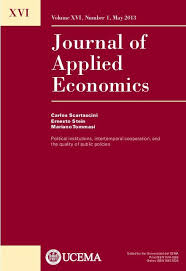
Inter-temporal preferences are important determinants of investment decisions, including investments in human capital. Yet, little is known about these preferences for recipients of conditional cash transfers (CCTs). We simultaneously estimate utility curvature (preference for consumption smoothing), discounting, and present biasedness for such recipients. We also introduce a financially motivated method of measuring willingness to forgo funds to control household finances. We find that female participants in a CCT program in Guatemala have very high degrees of utility curvature and low discount factors, which may lead to low levels of investment by participants in the human capital of the household. We also find that intra-household conflict is not significantly related to consumption smoothing, discounting, or present bias.
Relative performance feedback is common in competitive environments. Such feedback, especially when it is negative, is more likely to affect beliefs in women Roberts and Nolen-Hoeksema(1989). We investigate the effect of relative performance feedback on subsequent performance ina winner-take-all environment. We find that feedback slightly reduces the performance of men. Women, on the other hand, respond to negative feedback by increasing their subsequent performance, even when doing so is unlikely to affect the likelihood of winning.
Prosecutors in the United States are often incentivized directly or indirectly to maximize their conviction rate. Since prosecutors have broad discretion when deciding which cases to pursue, these conviction-rate-centered incentives may affect charges brought and plea-bargains offered. We report the results of a controlled laboratory experiment with participants in the role of prosecutors. We vary whether conviction rates include guilty pleas. We find that including plea bargains in the conviction rate increases the number of plea offers made and increases the difference between the severity of the crime offered in the plea and the one threatened for trial. We also find that prosecutors who favor more lenient plea offers and trial charges are more likely to increase the trial penalty when plea bargains count as convictions. Similarly, we find that women prosecutors are more likely than men to increase the trial penalty when plea bargains count in the conviction rate, though women are no more likely than men to be in the set of prosecutors who follow a more lenient bargaining strategy.

In 1995, Texas passed a law requiring that jurors be provided an opportunity to donate jury pay to a crime victims fund. In practice, courts present this opportunity before jury selection begins, priming the jurors about the needs of crime victims, which could bias jury decision-making. We report correlational evidence that conviction rates increased after this policy was imposed. To explore a causal link, we ran a laboratory experiment, finding that male jurors are more likely to convict a defendant after being given the opportunity to donate, while female jurors are less likely to convict.
We study all-pay auctions with noise both theoretically and experimentally. First we show theoretically that all-pay auctions with noise can be surprisingly similar to standard all-pay auctions with complete information in several important respects. Specifically, equilibria in both formats feature the same expected expenditures. Without noise, predictions are in mixed strategies, while with noise, predictions are in pure strategies. We then report the results of an experiment on our model and find qualitative support for the predicted equivalence of \emph{expected} expenditures. Our experimental results on the noisy version of the model are particularly interesting, however, as subjects’ behavior is more closely in line with the model’s theoretical equilibrium predictions than the treatment without noise in terms of reduced variance.
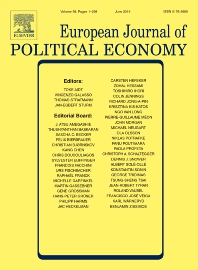
This paper studies entry decisions in contests with private values. Potential contestants observe their value and the common opportunity cost of entry, and make entry decisions simultaneously. Theory predicts that whether or not contestants are informed of the number of entrants prior to choosing their expenditures has no effect on entry or aggregate expenditures. We test these assertions in our experiments. We find substantial over-entry in both information structures. However, entry is higher when contestants are informed. Since expenditures do not, on average, differ across information structures, aggregate expenditure is also higher when contestants are informed. Contestants earn on average less than the opportunity cost of entry.
We examine entry decisions in first-price and English clock auctions with participation costs. Potential bidders observe their value and report maximum willingness to pay (WTP) to participate. Entry occurs if revealed WTP (weakly) exceeds the randomly drawn participation cost. We find no difference in WTP between auction formats, although males have a higher WTP for first-price auctions. WTP is decreasing in the number of potential bidders, but this reduction is less than predicted and small in magnitude.

Inter-temporal trade-offs are ubiquitous in human decision making. We study the relationship between preferences over such trade-offs and the ratio of the second digit to that of the forth (2D:4D), a marker for prenatal exposure to sex hormones. Specifically, we study whether 2D:4D affects discounting. Our sample consists of 419 female participants of a Guatemalan conditional cash transfer program who take part in an experiment. Their choices in the convex time budget (CTB) experimental task allow us to make inferences regarding their patience (discounting), while controlling for present-biasedness and preference for smoothing consumption (utility curvature). We find that women with lower digit ratios tend to be more patient.

Attracting bidders to an auction is a key factor in determining revenue. We experimentally investigate entry and bidding behavior in first-price and English clock auctions to determine the revenue implications of entry. Potential bidders observe their value and then decide whether or not to incur a cost to enter. We also vary whether or not bidders are informed regarding the number of entrants prior to placing their bids. Revenue equivalence is predicted in all four environments. We find that, regardless of whether or not bidders are informed, first-price auctions generate more revenue than English clock auctions. Within a given auction format, the effect of informing bidders differs. In first-price auctions, revenue is higher when bidders are informed, while the opposite is true in English clock auctions. The optimal choice for an auction designer who wishes to maximize revenue is a first-price auction with uninformed bidders.
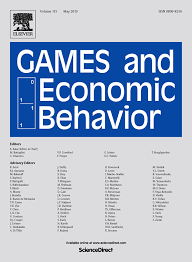
In common-value auctions bidders have access to public information, and may also hold private information prior to choosing their bids. The literature has predominately focused on the case in which bidders are ex-ante symmetric and privately informed, and finds that aggressive bidding such that payoffs are negative is common (the winner’s curse). In practice, bidders often only have access to public information, and use this information to form (possibly differing) beliefs. In addition, a bidder who is not privately informed may face bidders who are. We examine bidding behavior of both informed and uninformed bidders, and vary the information structure they face. We find that uninformed bidders underbid dramatically and persistently, while informed bidders tend to overbid in the two-bidder case. Our results highlight the importance of correctly modeling the information available to bidders.
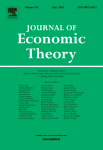
We analyze symmetric, two-bidder all-pay auctions with interdependent valuations and discrete type spaces. Relaxing previous restrictions on the distribution of types and the valuation structure, we present a construction that characterizes all symmetric equilibria. We show how the search problem this construction faces can be complex. In equilibrium, randomization can take place over disjoint intervals of bids, equilibrium supports can have a rich structure, and non-monotonicity of the equilibrium may result in a positive probability of allocative inefficiency when the value of the prize is not common. Particular attention is paid to the case in which an increase in a bidder’s posterior expected value of winning the auction is likely to be accompanied by a corresponding increase for the other bidder. Such environments are “highly competitive” in the sense that the bidder’s higher valuation also signals that the other bidder has an incentive to bid aggressively.
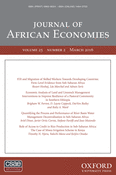
This paper provides a theoretical and empirical investigation of the effect of the HIV/AIDS pandemic on community-level informal financial institutions such as rotating savings and credit associations. Our theoretical model illustrates that the mortality risk implied by such a mortality shock limits the scope of informal contracts, leading to more exclusive institutions. Using panel data from the high-prevalence area of KwaZulu Natal, South Africa, we find that mortality at the community level substantially reduces the propensity to participate in informal financial institutions in ways that are consistent with the predictions of our theoretical model.

In many auctions the valuation structure involves both private and common value elements. Existing experimental evidence (e.g., Goeree and Offerman, 2002) demonstrates that first-price auctions with this valuation structure tend to be inefficient, and inexperienced subjects tend to bid above the break even bidding threshold. In this paper, we compare first-price auctions with an alternative auction mechanism: the least-revenue auction. This auction mechanism shifts the risk regarding the common value of the good to the auctioneer. Such a shift is desirable when ex post negative payoffs for the winning bidder results in unfulfilled contracts, as is often the case in infrastructure concessions contracts. We directly compare these two auction formats within two valuation structures: (1) pure common value and (2) common value with a private cost. We find that, relative to first-price auctions, bidding above the break-even bidding threshold is significantly less prevalent in least-revenue auctions regardless of valuation structure. As a result, revenue in first-price auctions is higher than in least-revenue auctions, contrary to theory. Further, when there are private and common value components, least-revenue auctions are significantly more efficient than first-price auctions.
Risk preferences drive much of human decision making including investment, career and health choices and many more. Thus, understanding the determinants of risk preferences refines our understanding of choice in a broad array of environments. We assess the relationship between risk preferences, prenatal exposure to sex hormones and gender for a sample of Ladinos, which is an ethnic group comprising 62.86% of the population of Guatemala. Prenatal exposure to sex hormones has organizational effects on brain development, and has been shown to partially explain risk preferences for Caucasians. We measure prenatal exposure to sex hormones using the ratio of the length of the index finger to the length of the ring finger (2D:4D), which is negatively (positively) correlated with prenatal exposure to testosterone (estrogen). We find that Ladino males are less risk averse than Ladino females, and that Ladino males have lower 2D:4D ratios than Ladino females on both hands. We find that the 2D:4D ratio does not explain risk preferences for Ladinos. This is true for both genders, and both hands. Our results highlight the importance of exploring the behavioral significance of 2D:4D in non-Caucasian racial groups.
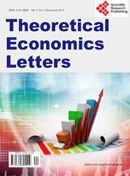
This note contains the equilibrium bid functions for two types of common-value procurement auctions: 1) a procurement auction in which bids represent an enforceable contract; 2) a procurement auction in which, upon learning the true cost of supplying the good, the winning bidder can renegotiate the contract with the buyer, and each bidder must submit a bond with their bid, which is returned at the end of the auction unless they are the low bidder and renegotiate the contract.
Economics has a rich history of imperialism, in which the methodology of economics is applied to topics outside its traditional domain. The success of this phenomenon owes much to the insights said methodology provides. One of the most successful examples of such imperialism is public choice, which notes that political actors are likely to maximize their own self-interest, rather than societal well-being. That is, political actors are unlikely to act as “benevolent dictators,” and government failures are likely to emerge if this is not accounted for. The insights yielded by this research program have been, and continue to be, considerable. Given this remarkable success, it is natural to apply these same analytical tools to the legal system. This volume seeks to do just that. It explores environments which relax the assumption that legal actors necessarily act in the public interest, and examines the consequences of self-interested judges, district attorneys, and so on. This book unambiguously increases our understanding of the inner workings of the legal system, while simultaneously highlighting the need for a great deal of additional research. I am pleased to highly recommend this volume to those with an interest in how legal institutions behave in practice. My only quibble is that some of the content, while interesting, seems out of place.

Formal institutions within a country represent an incomplete contract with the population. When events occur that the law does not address, and the necessity for action precludes relying on existing mechanisms to address the situation, one approach is to grant emergency and temporary power to the state. As noted in Akerman (2004), “[u]nless careful precautions are taken, emergency measures have a habit of continuing well beyond their time of necessity.” This paper describes an example from antiquity in which the Roman Senate kept a sumptuary law, Lex Oppia, well past its original purpose. In particular, this law was imposed to assist in the war effort against Carthage, and was kept on the books well after this war ended in the name of preserving the virtue of Roman women.
This paper considers imperfectly discriminating contests and all-pay auctions with asymmetric information. In our design one bidder observes an informative signal as to the realized common value of the good. The other bidder holds only public information; she knows the distribution from which the value of the prize is drawn. We characterize the equilibrium in a common-value all-pay auction with this type of information asymmetry. Theory suggests that such asymmetric information yields information rents for the informed bidder and reduces the expected revenue of the seller. We report the results of experimental tests of these theoretical predictions.
This paper considers a model in which contestants compete in two sequential imperfectly discriminating contests where the prize in each contest has a common but uncertain value, and the value of the prize in the first contest
is positively related to that in the second. The contestant who obtains the prize in the
first contest (the incumbent) privately observes its value, thereby introducing asymmetric information. Relative to the case where the incumbents private information does not provide a useful estimate of the value of the prize in the second contest, effort expenditures in the second contest strictly decrease. Further, the incumbent is strictly better off, while the other contestants (the challengers) are strictly worse off. Counterintuitively, the incumbents ex ante probability of winning is strictly less than that of a challenger, despite expending (weakly) more effort than a challenger in expectation. Effort expenditures in the
first contest increase such that total effort expenditures over the two contests increase, relative to the case of independent prizes. In the second (terminal) contest, expected effort expenditure of an individual contestant is decreasing in the number of contestants, the expected utility of a contestant is decreasing in the number of contestants, and the aggregate expected effort expenditure is increasing in the number of contestants. Alternative methods of modeling an incumbency advantage are also considered.

